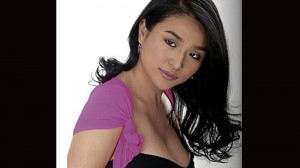Hits and misses in Dolphy tribute
LAST Sunday, we stayed up way past our bedtime to watch the “Alay Tawa” tribute to Dolphy on ABS-CBN. It was a noteworthy production because it involved the talents of all three of our leading TV networks, who were finally brought together by their shared love and respect for the local entertainment scene’s recently departed King Comic.
The show was too long, of course (it started at 10:30 p.m. and finally ended at 1 a.m.)—but, that’s no surprise because, in these parts we injudiciously confuse quantity with quality.
Some numbers did stand out, thank goodness, like Epi Quizon and Vandolph’s tribute to Dolphy and Panchito’s signature “translation” comedic shtick. What made the droll number even more special was the fact that Dolphy’s sons used the actual scripted routine that their dad and his sidekick made iconic via their far-out translation of the lyrics to “Bahay Kubo.”
Also outstanding was the participation of Dolphy and Zsa Zsa Padilla’s gifted and lovely daughter, Zia Quizon. And the number featuring some five or six of Dolphy’s more talented sons was similarly on the up-and-up.
Alas, other efforts paled in comparison to them. Most disappointing of all was the overlong “tribute” to Dolphy’s gallery of gay characters, personified by the eager but underachiever likes of Keempee de Leon, Wendell Ramos, Smokey Manaloto and Gio Alvarez, who were simply too chunky and graceless to successfully approximate Dolphy’s own fey, gay creations.
Article continues after this advertisementFlaming fairies
Article continues after this advertisementThank goodness, Michael V and Martin Escudero fared better, because they instinctively understood the need to be light and “graceful” when trying to portray flaming fairies on a comedic, psychedelic high.
Another overlong number that didn’t exactly hit the spot was the ballet spoof participated in by some female stars, including a number of less than genuinely funny comediennes. We appreciated their efforts to do justice to the difficult piece, but they were half-baked, perhaps due to lack of sufficient rehearsals and insightful inventiveness and wit.
Less than effective, too, were other “period” tributes, like the renditions of old Dolphy skits involving an “invisible” dog and similarly nonexistent money, etc.
It wasn’t that the younger comics involved weren’t talented, but their more gung-ho and “sledgehammer” style clashed with Dolphy and Panchito’s more natural and light way of making people laugh.
Toward the end of the very long show, around six female soloists performed some of Dolphy’s favorite songs, but their medley of spot numbers was too perfunctory to be truly diverting.
For their part, Mark Herras and Gab Valenciano danced their hearts out in a well-realized tribute to the frenetic dance duets of Dolphy and Bayani Casimiro, and thus did much better. We also appreciated some of the tribute show’s period clips of Dolphy’s actual comedy and musical performances, because they showed how truly, prodigiously special his unique abilities were.
—Would that more of the stars who paid loving tribute to him were able to rise up to his level of iconic excellence, originality—and puckish verve!
